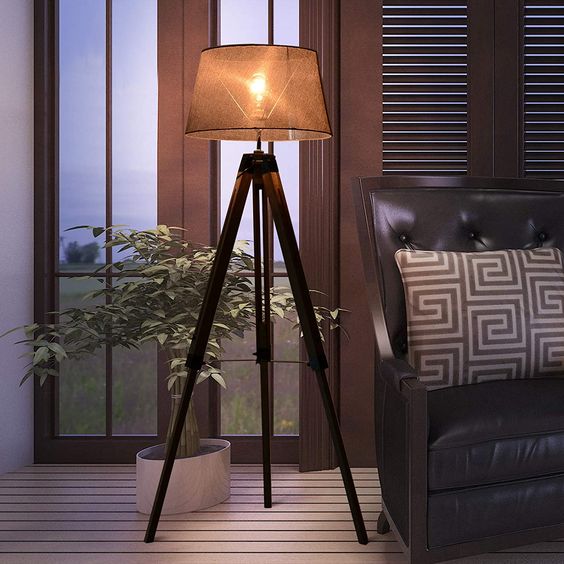Erlanggablog.com – When choosing Lamp Shades, consider the size of the base of the lamp and the shape of the bulb. A table lamp shade should extend at least eight inches from the base of the lamp. A tall lamp base requires a taller shade than one that is short or wide. Flat lamps should use a flat shade, and tall ones should use a tall shade. Remember that not all shades will match perfectly with all lamp bases, so make sure that you choose a shade that will complement the base of your lamp.
Most Popular Lampshade Designs
Another popular shape for lampshades is the oval. While oval shades are unusual in shape, they are popular because they add dimension to your lamp. However, if you want to purchase an oval shade, you should measure two diameters. The metal receptacle on top of the lamp base holds the bulb, and it may have a switch. There is also a slip-UNO fitting beneath the socket. A harp is another option for the base.
Decorative trims are a great way to personalize your lampshade. Try using free-form designs or stencils to make a more professional-looking shade. If you want to save money, you can also refashion your old clothes into decorative trim. If you don’t have much of these materials, you can use ribbon as it is already cut in a square shape. Once you have added your trim, you can use a glue gun to apply it to the shade.

The material of a Lamp Shade is important. The material should be either translucent or opaque so that it provides adequate lighting. Glass is the most transparent material, but colored glass may not be as good as transparent glass. It is also important to consider the rest of the room when choosing your Shades for Lamps. Once you know what your needs are, you can purchase the right Lamp Shades for your lamp. The right material and shape can go a long way toward defining your style.
Tips for Choosing the Right Lampshade
A lampshade should be at least half an inch wider than the base. A rectangular shade should also be about half an inch wider than the base. Round shades should be measured across the top, while square or angular bases should be measured diagonally. When choosing a lampshade, consider the base shape of the lamp and the style of the lamp. If the shade is not round, it will not fit. If you aren’t sure, consider buying a rectangular shade.
When choosing a new Shade, keep in mind that the lamp base should match the theme of the room. When choosing a shade, choose one that will contrast with a strong color. Make sure that the shade comes with a spider fitter. For example, if your lampshade has a harp, you will need to replace the harp and reattach the base. This can be a pain but can look good.

Another consideration is safety. It is important to choose the correct shade for the bulb’s wattage. Using a higher-wattage bulb means that your lamp will generate more heat than usual. You should consider placing the bulb in a higher-wattage lamp and using a larger shade. For example, a small lamp with a high wattage bulb needs a wider shade. In this situation, a smaller lamp with a larger base will need a larger shade.
Considerations When Choosing a Lamp Color
Choosing the right shade for a lamp is largely a matter of personal taste. Choose a shade that reflects your style. There are many options for color and style. You can choose simple, understated, bold, or something in-between. Shades for lamps can also be translucent or opaque. You can choose from a variety of colors to match the lampshade’s base. You will not be disappointed with your selection!
A traditional lampshade with a classic design is the classic drum. This shade is 17 inches wide and features a metal spider attachment. A more contemporary version of the drum lampshade has a brown fabric with a metal washer. It is the perfect complement for a stylish lamp with a gold or silver finish. Choosing a shade for your lamp is an important decision for your room decor. The right shade can set the tone for the rest of the room’s design.

Whether you want to choose a fabric for your lampshade, there are a few key factors to consider. The weight of the fabric can affect how much light it lets in or out. Thicker fabric will let in more light, while a thin fabric will let less light in. Fabric weight affects the brightness or dimness of a room, and choosing the right fabric for your lamp is crucial to achieving the desired results.







